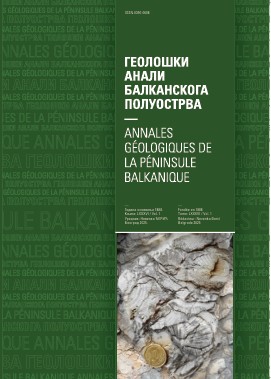Bi-directional extensional control of the Berane Basin formation, northern Montenegro
Abstract
The Berane Basin is a Miocene, northeast-southwest oriented intramountain basin of the Dinarides, overlying the pre-neotectonic basement of the Drina-Ivanjica unit, the East Bosnian-Durmitor unit and the Western Vardar Zone. The structural evolution and the tectonic regimes that controlled the formation of the Berane Basin are not fully understood. In this paper, we conducted field kinematic analysis by applying fault-slip inversion to derive paleostress regimes and study the deformation phases that led to the formation of the Berane Basin. Observed deformation is related to the Miocene extension in two directions, perpendicular and parallel to the Dinarides orogen. Such bi-directional extension resulted in a complex fault pattern where, among observed normal, oblique and strike-slip faults, those with oblique-normal slip dominate. The observed faults likely form a system of mutually overprinting half-grabens, mainly driven by orogen-parallel extension associated with the large-scale regional Skadar-Peć Fault, while orogen-perpendicular extension has subordinate effects on the Berane Basin formation.
Copyright (c) 2024 Geološki anali Balkanskoga poluostrva

This work is licensed under a Creative Commons Attribution 4.0 International License.










